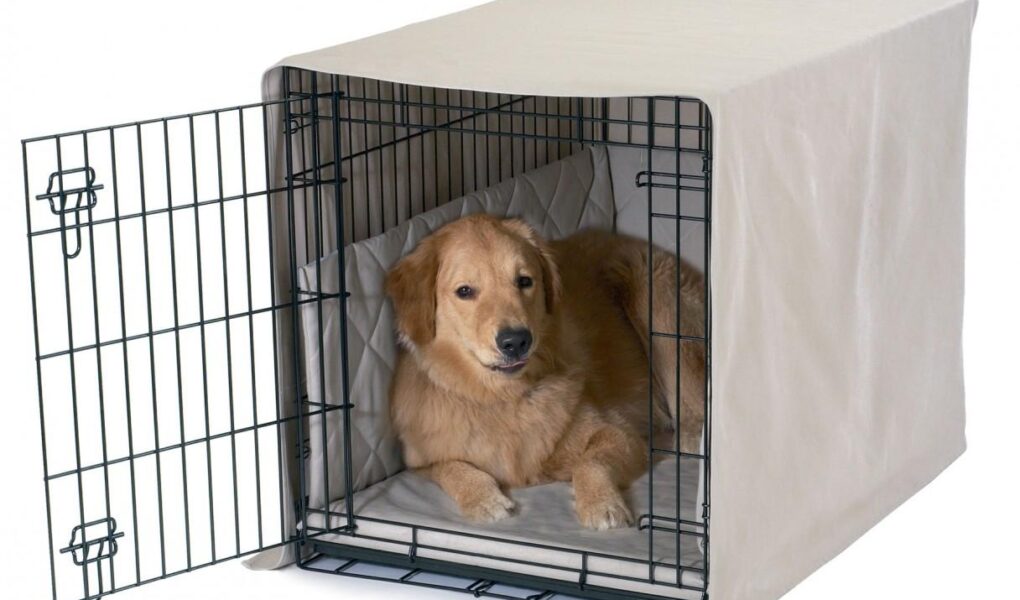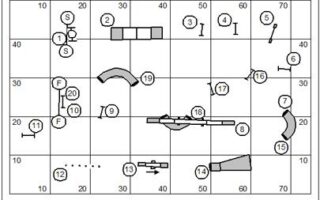Bringing a new puppy into your home is an exhilarating journey filled with wagging tails and playful barks. However, along with the joy of puppy parenthood comes the responsibility of teaching your furry friend the basics of living harmoniously in a human world. One of the most effective tools in your training arsenal is crate training—a method that not only fosters a sense of security for your puppy but also aids in housebreaking and establishing a routine. This article delves into the art and science of crate training, exploring its numerous benefits, practical steps to implement, and tips to ensure the process is a smooth and positive experience for both you and your new companion. Whether you’re a first-time pet owner or a seasoned canine enthusiast, understanding the principles of crate training can help lay the foundation for a well-adjusted and happy dog. Join us as we unlock the secrets to creating a safe haven for your puppy, transforming what might seem like a simple box into a cherished sanctuary.
Table of Contents
- Understanding the Purpose of Crate Training for Your Puppy
- Choosing the Right Crate: Size and Style Considerations
- Establishing a Positive Association with the Crate
- Common Crate Training Challenges and Effective Solutions
- Q&A
- In Summary
Understanding the Purpose of Crate Training for Your Puppy
Crate training is a fundamental process that promotes a harmonious relationship between you and your puppy. By introducing your puppy to a crate, you create a safe, secure space where they can feel at home. This practice helps establish a routine and teaches your puppy to have control over their elimination needs. Additionally, a crate can act as a refuge, reducing anxiety during stressful situations, such as thunderstorms or separation from you. Key benefits of crate training include:
- Establishing boundaries: Puppies learn their designated space.
- Assisting in potty training: Regular crate use encourages bladder control.
- Preventing destructive behavior: Keeping your puppy safe when unsupervised.
- Providing comfort: A crate can become a cozy den for rest.
When introducing your puppy to the crate, it’s important to follow positive reinforcement techniques that encourage them to view this space as their own. Gradually acclimatizing them by placing treats and familiar toys inside can help them associate the crate with positive experiences. Building up crate time slowly and never using the crate as punishment fosters a sense of trust and security. Here are some tips to ensure effective crate training:
| Tip | Description |
|---|---|
| Consistency | Use the crate at the same times daily. |
| Duration | Start with short periods and gradually increase. |
| Comfort | Make the crate inviting with blankets and toys. |
| Positive Reinforcement | Reward your puppy for entering and staying calm in the crate. |
Choosing the Right Crate: Size and Style Considerations
When selecting a crate for your puppy, size is a crucial factor that will significantly affect your training experience. The ideal crate should be spacious enough for your puppy to stand, turn, and lie down comfortably, but not so large that it allows them to use one corner as a bathroom. For puppies that are still growing, consider opting for an adjustable crate that can accommodate their increasing size. A good rule of thumb is to measure your puppy’s height and length, then add a few inches to determine the optimum dimensions. Remember, too much unused space can hinder successful training, as it may encourage your puppy to eliminate inside the crate.
In addition to size, the style of the crate can also impact your puppy’s comfort and your training process. There are various options available, including plastic travel crates, wire crates, and soft-sided models. Each style comes with its own advantages: wire crates offer visibility and ventilation, while plastic crates provide a more den-like environment that some puppies feel secure in. If you are often on the go, a portable soft-sided crate may be your best bet. Consider the following when making your choice:
- Portability: Will you be traveling frequently with your puppy?
- Durability: Does your puppy tend to chew or scratch a lot?
- Ventilation: Is your puppy sensitive to heat?
Ultimately, the right crate will not only suit your puppy’s needs but also your lifestyle, making the crate training process a smoother and more enjoyable experience for both of you.
Establishing a Positive Association with the Crate
Creating a comfortable and inviting environment is essential for fostering a positive relationship between your puppy and their crate. Start by placing the crate in a high-traffic area of your home where your puppy can feel included but also secure. Line the crate with soft bedding, and consider adding a few of your puppy’s favorite toys to make it more appealing. Emphasize the crate as a safe haven by offering treats and praise whenever your puppy shows interest in going inside. This positive reinforcement can help create a strong, favorable connection with the space.
Another effective strategy is to conduct short training sessions where you encourage your puppy to enter the crate voluntarily. Use a calm voice and gentle gestures to coax them inside, and reward them with a treat when they comply. Gradually increase the time they spend in the crate with the door open, and once they seem comfortable, gently close the door for brief intervals. Below is a simple guide to help you establish this routine:
| Step | Action | Goal |
|---|---|---|
| 1 | Encourage entry with treats | Positive crate association |
| 2 | Close the door for 1-2 minutes | Comfort with confinement |
| 3 | Increase duration gradually | Build confidence |
Common Crate Training Challenges and Effective Solutions
Crate training can present various challenges that may test the patience of even the most dedicated puppy parents. One common hurdle is the puppy’s initial resistance to the crate, which may manifest as barking, whining, or even attempting to escape. This behavior often arises from fear of confinement or simply a desire to be near their humans. To overcome this, consider the following solutions:
- Positive Reinforcement: Use treats and praise to encourage your puppy to enter the crate willingly.
- Gradual Introduction: Start with short periods of confinement, gradually increasing the time as your puppy becomes more comfortable.
- Comfort Items: Place familiar items, like toys or a blanket with your scent, to make the space inviting.
Another challenge is accidents within the crate, which can discourage owners and make training seem futile. It’s crucial to remember that puppies have small bladders and can’t hold it for extended periods. To mitigate this issue, implement these effective strategies:
- Regular Potty Breaks: Establish a consistent schedule for potty breaks, particularly after meals and naps.
- Size Appropriateness: Ensure the crate is the right size; it should be big enough for the puppy to stand and turn around but not so large that it allows them to eliminate in one corner and sleep in another.
- Frequent Monitoring: Keep an eye on your puppy’s behavior for signs they need to go out.
Q&A
Q&A: Crate Training Your Puppy – A Guide for Paw-rental Success
Q1: What is crate training, and why is it beneficial for my puppy?
A: Crate training is the process of teaching your puppy to see their crate as a safe and comfortable space. The crate acts like a den, providing your puppy with a cozy retreat where they can relax and feel secure. Benefits of crate training include helping with housebreaking, keeping your furniture safe from teething puppies, and providing a safe space during travel or when you’re unable to supervise them.
Q2: How do I choose the right crate for my puppy?
A: Selecting the ideal crate involves considering your puppy’s size and growth potential. A properly sized crate should be large enough for your puppy to stand up, turn around, and lie down comfortably but not so spacious that they can use one corner as a bathroom. Adjustable or expandable crates can grow with your puppy, offering a longer-term solution.
Q3: At what age can I start crate training my puppy?
A: You can begin crate training as soon as you bring your puppy home, typically around 8 weeks old. Early exposure helps them associate the crate with positive experiences. However, be mindful of their age; very young puppies have limited bladder control and may need frequent breaks outside.
Q4: How do I introduce my puppy to their crate without causing anxiety?
A: Introduce the crate gradually. Place it in a common area with the door open, allowing your puppy to explore it freely. Toss in some toys or treats to encourage them inside. You can also feed your puppy their meals near or inside the crate to foster positive associations. Never use the crate as a form of punishment, as this will create negative feelings.
Q5: What are some tips to ensure my puppy is comfortable in their crate?
A: Make the crate inviting by adding a soft bed or blanket, and consider covering it with a light cloth to create a den-like environment. Ensure the temperature is comfortable and that your puppy has access to water. Consistent routines and plenty of positive reinforcement when they enter the crate will also help them feel at ease.
Q6: How long should I expect my puppy to stay in the crate?
A: For young puppies, the general rule of thumb is to match the hours of confinement to their age in months—plus one. For example, a 3-month-old puppy can usually hold it for about 4 hours. As they grow, their endurance will increase. However, never leave your puppy in the crate for too long; they need regular potty breaks and exercise for their physical and mental well-being.
Q7: What should I do if my puppy whines or barks while in the crate?
A: If your puppy whines or barks, first determine if they genuinely need to go outside. If it’s just a request for attention, try to ignore the noise; responding may encourage more vocalization. Instead, create a cozy routine around crate time, so they see it as a calm, happy place. If problems persist, consider consulting with a trainer for personalized strategies.
Q8: How can I transition my puppy out of the crate as they grow?
A: As your puppy matures and learns appropriate behaviors, you can gradually increase their freedom. Start by allowing short periods outside the crate when you’re home. Monitor their behavior and gradually build trust. Consider giving them safe spaces or baby gates to confine them when you can’t supervise. Transitioning should be gradual and based on their ability to handle newfound freedom.
By following these tips and insights, you’ll pave the way for successful crate training, creating a positive experience for both you and your puppy. Happy training!
In Summary
As we conclude our exploration of crate training, it’s essential to remember that this practice goes beyond mere confinement; it’s an invaluable tool in nurturing your puppy’s growth and security. By providing a safe haven, the crate can help foster a sense of comfort and discipline in your furry friend, laying the groundwork for a well-adjusted adult dog. Each puppy is unique, and the journey of crate training may present its own challenges, but with patience and consistency, you’ll witness the remarkable transformation that comes from understanding and trust.
As you embark on this rewarding adventure, keep in mind that the ultimate goal is a harmonious coexistence between you and your pup. Embrace the small victories, celebrate the progress, and always approach each training session with love and encouragement. With time, your crate will become not just a training tool, but a cherished retreat—a place where your puppy can find solace and security amid the bustling world around them. Happy training!


